Missing Matter: The Great Puzzle of the Universe
Our universe is made up of two main types of matter: dark matter and regular matter. Dark matter makes up the majority, but is invisible and can only be detected through its gravitational influence. In contrast, regular matter, which includes atoms, planets, and everything else we can see, makes up just 16% of all matter.
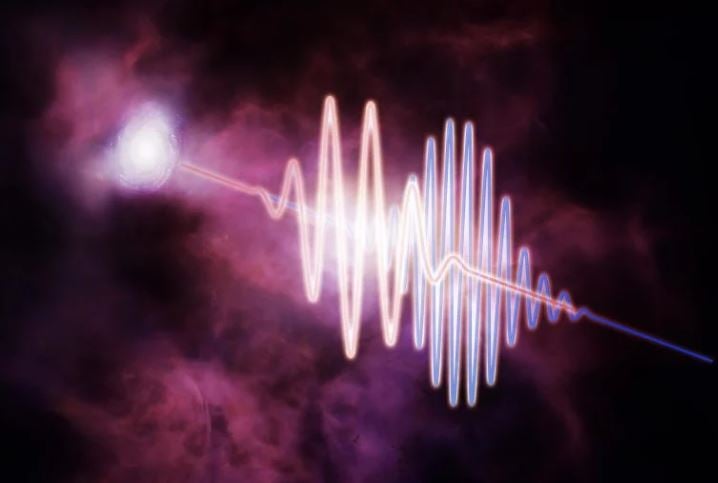
A new study has pinpointed the “missing” matter in the universe using fast radio bursts (FRBs) – short, bright radio signals from distant galaxies – as a guide. This artist’s rendering depicts a bright FRB traveling through the fog between galaxies, known as the intergalactic medium. Longer wavelengths, shown in red, are slowed down compared to shorter, bluer wavelengths, allowing astronomers to “weigh” the normally invisible matter. Credit: Melissa Weiss/CfA
According to cosmological models, most of this ordinary matter is not concentrated in stars or planets, but is widely dispersed in intergalactic space. However, due to its extremely low density, about half of this matter has long "evaded" scientists ' observations.
FRB: Light from the distant universe
In a study published in the journal Nature Astronomy, researchers from Caltech and the Harvard & Smithsonian Center for Astrophysics (CfA) found the answer. They used fast radio bursts (FRBs), short but intense bursts of energy, to detect the missing matter.
"FRBs shine through the fog of the intergalactic medium, and by precisely measuring the speed of light being slowed down, we can weigh that fog, even if it's too faint to see," explains Liam Connor, associate professor at Harvard and lead author of the study.
Data from record-breaking explosions
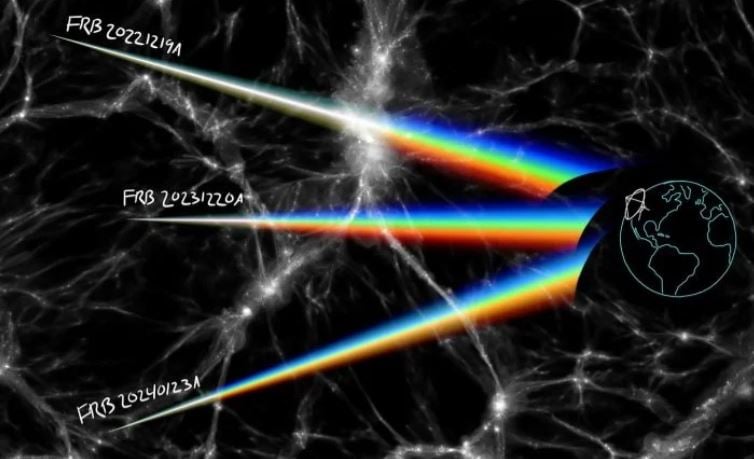
This artist's diagram depicts some of the 60 FRBs in the study—FRB 20221219A, FRB 20231220A, and FRB 20240123A—used to track the journey of gas through intergalactic space and map the cosmic web. Credit: Jack Madden/CfA, IllustrisTNG Simulations
The team analyzed 69 different FRBs, ranging in distance from 11.74 million to 9.1 billion light-years. Notably, the most distant FRB in the study, dubbed FRB 20230521B, is the most distant FRB ever recorded. Of these, 39 were identified by the Deep Synoptic Array-110 (DSA-110) at Caltech's Owen Valley Radio Observatory, a network of telescopes specifically designed to detect and locate FRBs. The remaining 30 FRBs came from other telescopes around the world , primarily the Australian Square Kilometre Array Pathfinder.
The scientists' approach is like seeing the "shadow" of matter. Professor Vikram Ravi from Caltech likened: "It's like we're seeing the shadows of all the baryons, with FRBs as the backlight... If you see a person in front of you, you can tell a lot about them. But if you just see their shadow, you still know they're there and you can estimate their size."
New potential for cosmology
The study results show that 76% of the universe's normal matter is located in intergalactic space, 15% is in galactic halos, and the rest is concentrated in galaxies. This distribution matches predictions from simulations, but this is the first time it has been confirmed by actual observations.
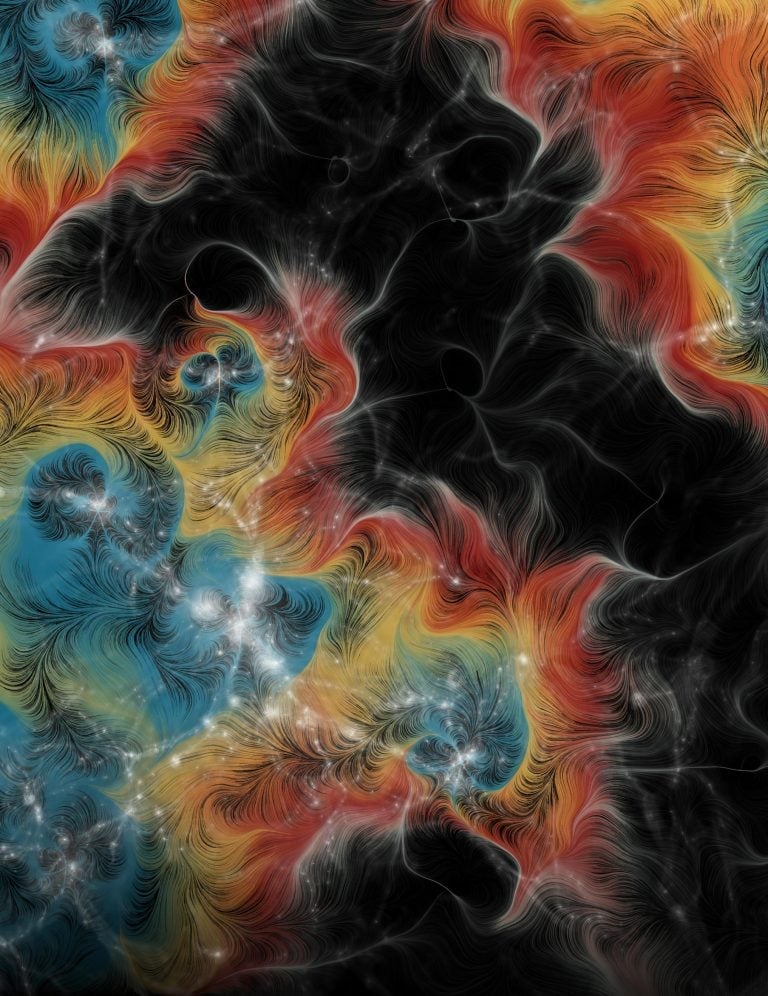
This artist's concept depicts ordinary matter in the thin, warm gas that makes up the intergalactic medium (IGM)—something scientists have had trouble observing directly until now. Different colors of light travel at different speeds through space. Here, the artist has used blue to highlight denser regions of the cosmic web, shifting to redder light for regions of vacuum. Credit: Jack Madden, IllustrisTNG, Ralf Konietzka, Liam Connor/CfA
The discovery not only solves a major mystery, but also opens up a new direction for cosmology. Data from FRBs could help scientists better understand the evolution of galaxies and even determine the mass of subatomic particles called neutrinos – a key element in moving beyond the Standard Model of particle physics.
According to Professor Ravi, this is just the beginning. In the future, the DSA-2000 radio telescope in the Nevada desert, expected to detect up to 10,000 FRBs per year, promises to take us deeper into deciphering the secrets of the universe.
Source: https://doanhnghiepvn.vn/cong-nghe/vu-no-vo-tuyen-nhanh-he-lo-kho-bau-vu-tru-bi-che-giau-suot-nhieu-thap-ky/20250817083747028





![[Photo] Dan Mountain Ginseng, a precious gift from nature to Kinh Bac land](/_next/image?url=https%3A%2F%2Fvphoto.vietnam.vn%2Fthumb%2F1200x675%2Fvietnam%2Fresource%2FIMAGE%2F2025%2F11%2F30%2F1764493588163_ndo_br_anh-longform-jpg.webp&w=3840&q=75)


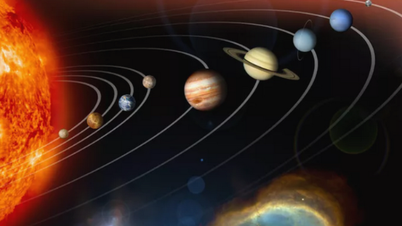



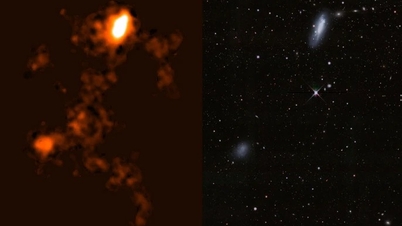
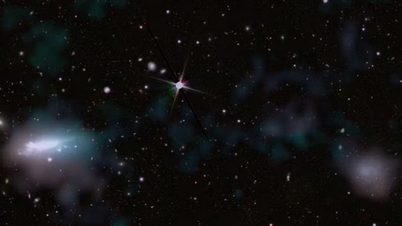
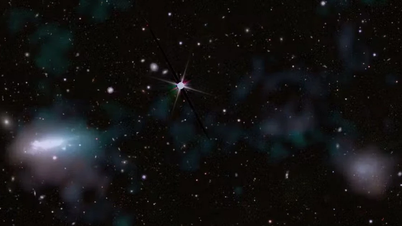























































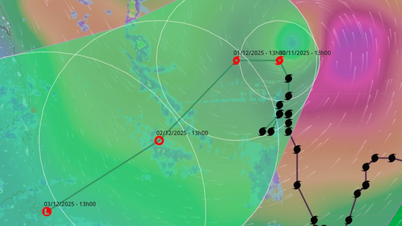




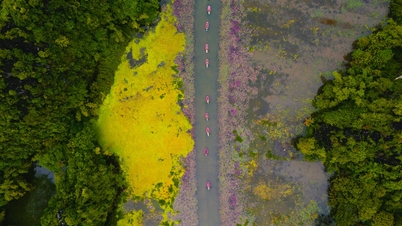

































Comment (0)